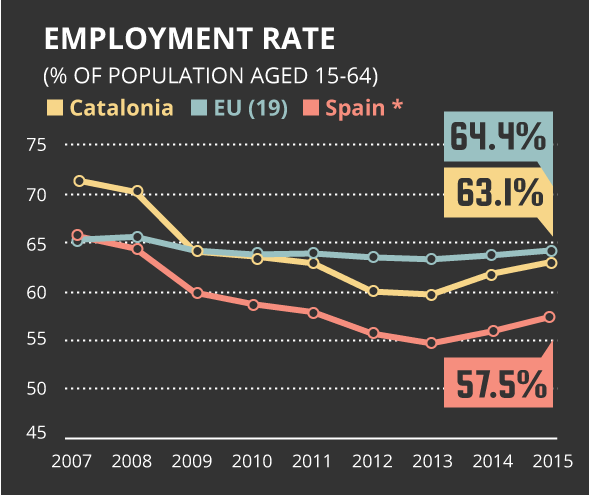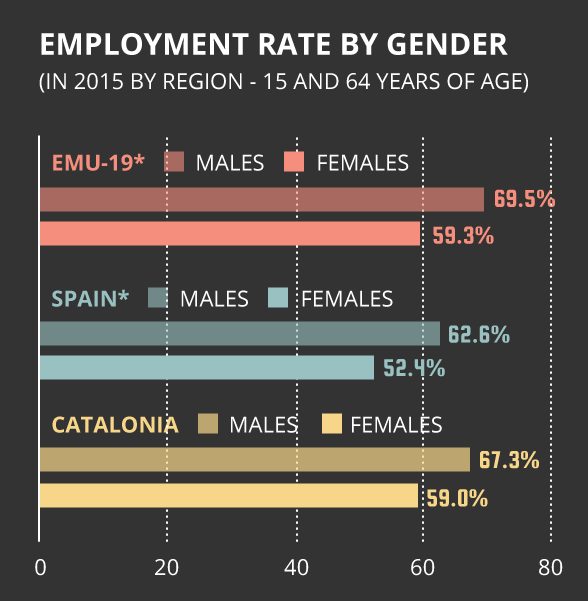Catalonia's employment rate increased in 2015 to euro area levels
63.1% of the population in Catalonia are employed, compared to an average 64.3% in the euro area.

*Annual average up to Q3 2015
Sources: Idescat and Eurostat.
In Catalonia, the employment rate increased in the past two years to a level very close to that of the euro area. This indicator relates an economy's employment level to its working-age population (people between 15 and 64 years of age, as defined by Eurostat).
During the years of economic expansion before the crisis, Catalonia's employment rate rose to an all-time high of 71.5% in 2007, exceeding by far the euro area average of 65.4%. Subsequently, and because of the intense destruction of jobs brought on by the recession, Catalonia's employment rate fell sharply to values similar to those reported in 1997-98.
The recent economic recovery has allowed to regain part of the lost ground. Thus, after reaching all-time lows in 2013 (59.8%), Catalonia's employment rate has shown improvement in the past two years, reaching 63.1% in 2015. This percentage is very close to that of the euro area as a whole, and it is the highest value recorded in Catalonia since 2010.
Catalonia's employment rate in 2015 exceeds by more than five points the Spanish rate of 57.5% for the three first quarters of the year (latest available data). In 2014, the employment rate reached 61.9% in Catalonia, compared to 56% in Spain.
High unemployment rate
While the employment rate stands at a level close to that of the euro area, the unemployment rate -i.e., the share of the workforce who is looking for a job but does not find one- still lags behind. Catalonia's unemployment rate was 18.6% in 2015 (despite a sharp decline), compared to 10.9% in the euro area. This is because, in Catalonia, the group of people who do not work includes a higher share of unemployed (that is, people who want to work) and a lower share of inactive compared to the euro area. Indeed, the percentage of population looking for a job in Catalonia is 14.4 %, while the percentage of population who is inactive is 22.4%.
Therefore, it may be argued that Catalonia's activity rate is high, as is its unemployment rate. It is important to distinguish between these two concepts: the activity rate measures the share of people of working age (between 15 and 64 years of age) who are active, that is, who are employed or looking for a job, while the unemployment rate measures the share of active population who are looking for a job and do not work.
What ultimately explains the unemployment rate differential between Catalonia and the euro area average is the high participation of the Catalan population in the labour market. The activity rate remained very high during the crisis years and currently stands at 77.6%, above that of the euro area (72.3%).

*Annual average up to Q3 2015.
Sources: Idescat, INE and Eurostat.

*Annual average up to Q3 2015
Source: Eurostat




